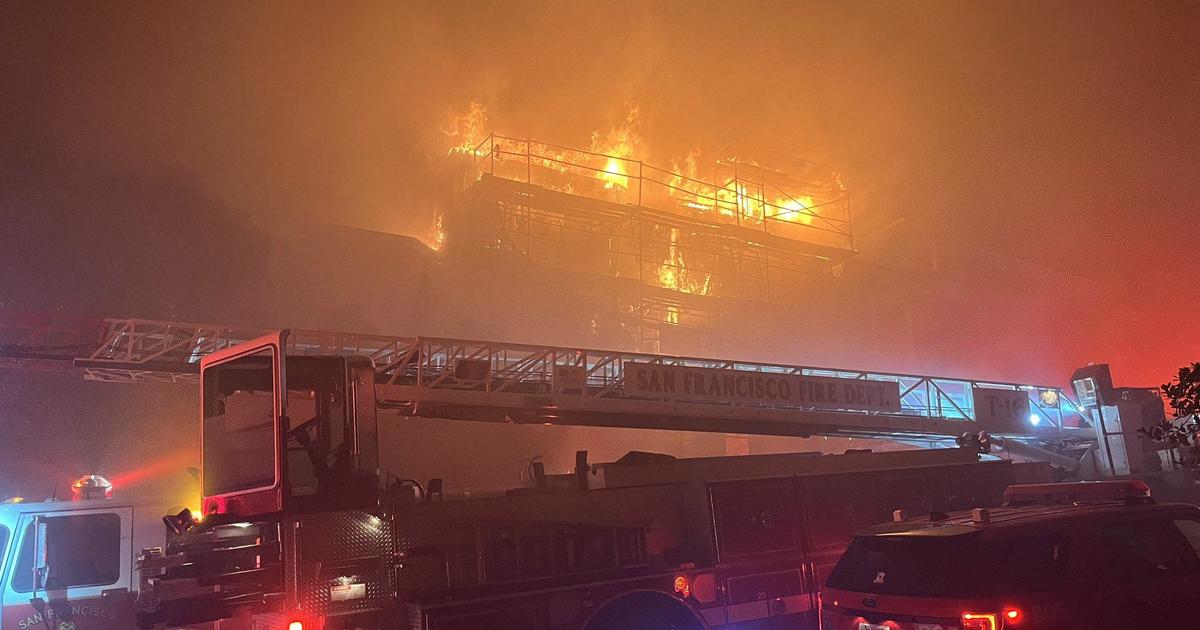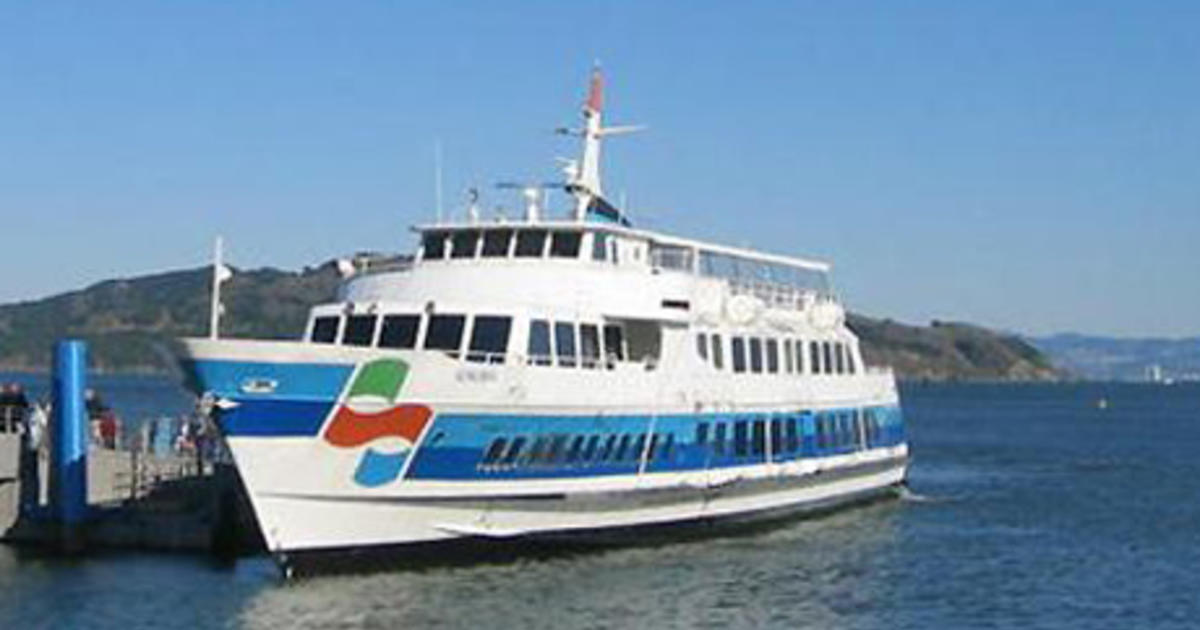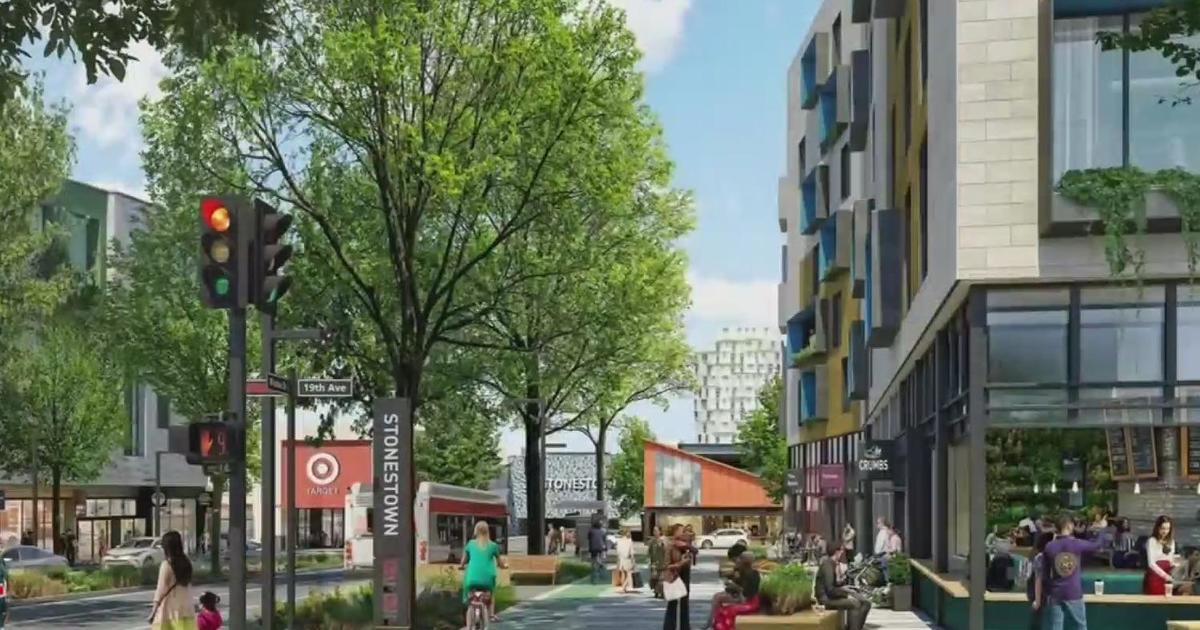CPUC approves expanded Cruise and Waymo robotaxi service, despite misgivings
SAN FRANCISCO -- California regulators on Thursday voted in favor of two rival robotaxi services providing around-the-clock rides throughout San Francisco, despite escalating fears about recurring incidents that have caused the driverless vehicles to block traffic or imperil public safety.
Commissioners with the state's Public Utilities Commission voted eight in favor and two opposed to the expansions sought by robotaxi services Cruise and Waymo early Thursday evening after hours of public comment. San Francisco will become the first major U.S. city with two fleets of driverless vehicles competing for passengers against ride-hailing and taxi services dependent on humans to operate the cars.
The decision was a major victory for Cruise — a subsidiary of General Motors — and Waymo — a spinoff from a secret project at Google — after spending years and billions of dollars honing a technology that they believe will revolutionize transportation. Both companies view approval of their San Francisco expansions as a major springboard to launching similar services in other congested cities that would benefit from a technology that they contend will be more reliable, convenient and cheaper than ride-hailing and taxi services reliant on human drivers.
"We can't wait for more San Franciscans to experience the mobility, safety, sustainability and accessibility benefits of full autonomy for themselves — all at the touch of a button," Waymo co-CEO Tekedra Mawakana said in a blog post. A Waymo spokesperson noted in a statement that "Waymo was already able to operate a 24/7 service across the entire city of San Francisco. The permit grants Waymo the ability to start charging for our rides."
It's a distinction many San Francisco officials didn't want, largely because of the headaches that Cruise and Waymo have been causing in the city while testing their robotaxis on a restricted basis during the past year.
ALSO READ: Activists hit San Francisco streets, use orange cones to thwart robotaxis
Although they have so far been able to drive millions of cumulative miles without causing any major accidents, the robotaxis have come to unexpected stops that have created road blocks that have at times impeded firefighters and police, in addition to normal traffic. The robotaxis have also driven into areas where traffic is prohibited, including repeated incursions into places where firefighters and police officers have been responding to emergencies.
"They are still not ready for prime time because of the way they have impacted our operations," San Francisco Fire Department Chief Jeanine Nicholson said during a four-hour hearing held Monday in advance of Thursday's pivotal vote.
To underscore her point, Nicholson cited 55 written reports of the robotaxis interfering with emergency responses. She said she is worried the problems will get worse if Cruise and Waymo are allowed to operate their services wherever and whenever they want in San Francisco — raising the risk of their disruptions resulting in injury, death or the loss of property that could have been saved.
The vote on the expanded service for the two companies was postponed twice this summer.
During the first four hours of public comments at Thursday's meeting, many speakers derided the robotaxis as annoying nuisances at best and dangerous menaces at worst. Others vented their frustration about San Francisco being transformed into a "tech playground" and the equivalent of an "ant farm" for haphazard experimentation.
Supporters of the robotaxis also stepped up to passionately defend the technology as a leap forward that will keep San Francisco on the cutting edge of technology while reducing the risks posed by drunk driving. One speaker predicted that unleashing the robotaxis would create a tourist attraction that could become as popular as rides on the fabled cable cars that have been navigating the city's streets for 150 years.
The testimony was, at times, very personal. Much of it came from those with disabilities, who offered starkly different views on what this emerging technology means to them.
"I'm also a mother of two children, one of whom is blind. I myself am blind," one woman said. "Driverless vehicles would be an amazing advantage for us getting around, a family with two car seats."
"I've already had a worrying interaction with one. I was entering a crosswalk with the green light," countered another.
There is also a difference of perspective in the labor community. Some were on hand speaking in support, others in opposition, along with the long-suffering taxi industry.
"Well you saw you well you saw what happened when they ushered in Uber and Lyft," said one opponent.
But the central discussion surrounded the question of safety, something else there is broad disagreement on.
"AVs are not the solution for safety at all. The fire department hates them. I can't imagine there being 10 times more AVs out there," said opponent Michael Smith. "And so it's really critical that we actually look at real safety and not just claimed safety by having a yellow shirt on."
Again, the comments got personal.
"They're over here, talking about safety, trotting out blind people, with dogs, and the very elderly and so forth, and so on," said Michael Martinez, another person opposed to an increase in AVs.
Jessie Wolinsky was among those who came to speak in support.
"Yes, I am in no way shape or form being persuaded by these companies to be here," explained Wolinsky. "The main thing that I'm concerned about is safety in terms of being harassed, and being assaulted, and unfortunate things that women have to think about. I have had very negative experiences on paratransit, taxis, Uber, and Lyft. And that's just not something I have to deal with with autonomous vehicles."
Officials for both Cruise, a subsidiary of General Motors, and Waymo, a spin-off from a secret project within Google, point to the mostly unblemished safety records that have proven their robotaxis are less dangerous than vehicles operated by people who can be distracted, intoxicated or just lousy drivers.
Both companies viewed approval of their San Francisco expansions as a major springboard to launching similar services in other congested cities that would benefit from a technology that they contend will be more reliable, convenient and cheaper than ride-hailing and taxi services reliant on human drivers.
Cruise on Monday disclosed it is currently testing 300 robotaxis during the day when it can only give rides for free, and 100 robotaxis at night when it has been allowed to charge for rides in less congested parts of San Francisco for the past 14 months. Waymo told regulators Monday that it has been operating about 100 of the 250 robotaxis it has available to give free rides to volunteers and employees throughout San Francisco.
If their proposed expansions are approved, neither Cruise nor Waymo would be limited on how many robotaxis they could deploy in San Francisco. In a conference call with analysts last month, Cruise CEO Kyle Vogt suggested his service might eventually build a fleet large enough to compete against the more than 10,000 human drivers now working for ride-hailing services such as Uber and Lyft in San Francisco.
But the proposed San Francisco expansion has been facing increasingly staunch resistance, prompting regulators to postpone two previously scheduled votes on the issue in June and July.
In a May 31 letter urging state regulators to continue to restrict the operations of Cruise and Waymo, San Francisco transportation officials asserted the driverless vehicles rely on a "developmental technology that is not ready for unconstrainted commercial deployment."
In a June 22 letter, the president of the union for San Francisco police officers warned of potentially dire consequences if Cruise and Waymo are allowed to expand throughout the city. Tracy McCray, the union president, cited a robotaxi obstructing emergency vehicles responding to a recent mass shooting that injured nine people as a chilling example of how the technology could imperil the public.
"While we all applaud advancements in technology, we must not be in such a rush that we forget the human element and the effects such technology unchecked can cause in dangerous situations," McCray wrote. "Delays of even seconds in our line of work can be a matter of life or death."
Earlier this week, officials for both both Cruise and Waymo sought to reassure regulators that they believe they have been able to fix most of the flaws that have cropping up and have set up response teams to help move stopped robotaxis within a few minutes.
Besides tinkering the technology controlling the robotaxis, Cruise and Waymo also said they have trained hundreds of San Francisco police and firefighters how to interact with the driverless vehicles. The training included instructions on how to gain manual control of the robotaxis — a process that can involve removing hundreds of pounds of equipment from the vehicles.
The training sessions haven't appeased Nicholson, the San Francisco fire chief, who expressed frustration at the notion that firefighters responding to emergency situations should be expected to "babysit" robotaxis entering places where they shouldn't be when every second counts.
"If we don't get to one person, that's one person too many we didn't get to," Nicholson said.
Wilson Walker contributed to this story.



